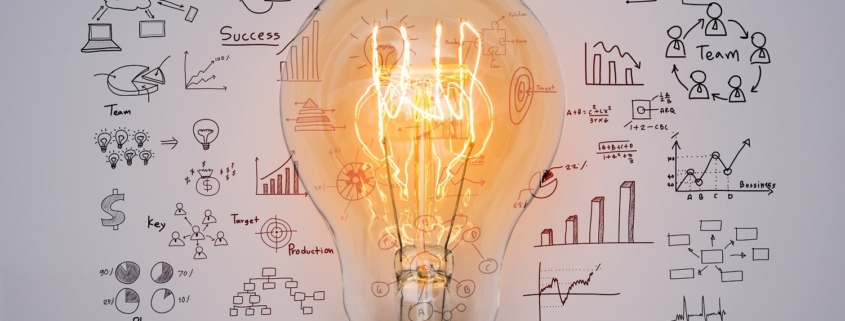In November BlueCallom hosted its fourth roundtable where the primary goal was and still is, making innovation a better-understood practice. The whole idea of the Innovation Thought Leader Roundtable is the exchange – dive deeper into the innovation processes.
Axel Schultze opened the roundtable with a topic that has been current for some time among the BlueCallom community: Innovation is a CEO Mandate. What do CEOs need to do to empower their teams to become truly innovative?
In the first place is clear communication between the C-level managers and innovation teams i.e. define the innovation goals, directions, and methods. We have already mentioned several times the importance of identifying team members with unique abilities to move the team and project forward.
How to identify innovative minds?
When we talk about successful innovation, execution is a part of it. As Christian Weh, Senior Director Innovation & Global Projects at Johnson & Johnson, said: “all successful innovators are playing an important role in the execution process.” The Maverick traits of a person are always visible through their independence, creativity, and experimentation. Truly talented individuals exist and they are the ones who always tend to be the best performers in the organization. Christian also mentioned capability building training as a part of human resources management, where organizations provide talent programs, incorporate continuous learning and improvement which is focused on specific capabilities. This tool is used to identify innovative talents. Ambition is another powerful trait and its impetus for success and achievement since ambitious people are goal-oriented and always strive for the next achievement.
Luuk Houtepen, Director of Strategic Partnerships and Innovation at SThree, sees exponential thinking as one of the important factors when it comes to recognizing talent. Individuals who possess this trait can envision the future and reveal new opportunities. We need to start visualizing the future to harness the potential of technology and positively impact our lives, not just in five or ten years, but also in a few generations.
“If you are really driven to make a change, to prove yourself, you won’t just settle down. You will be ambitious enough to push forward, to identify problems, and opportunities,” said Christian. He gave us an example, “Amazon did disrupt the book industry with audiobooks and Jeff Bezos can be described as an ambitious leader who set his targets and went beyond the next business plan.”
Innovation is not only the CEO Mandate, it is also a CEO Task
Instead of having more and more innovations, most of the organizations are just followers with no concrete business plans. And this is the reason Luk said that “Innovation is not only the CEO Mandate, it is also a CEO task to open people’s minds up to where the world is going.”
Axel Schultze agreed that innovation is a CEO task, but when we look at their daily life, which includes political ambitions, involvement in the investor industry plus running a company, there is very limited time left for an extra assignment. But if innovation becomes the core of a business, the CEO has to give his/her best to encourage the innovation team and support the innovation project.
As Luuk already said, exponential thinking is important, I would like to point out the following:
Exponential thinking brings us to innovation and the BlueCallom Equation, G = I * E² (Groundbreaking Innovation (G) = Ideation (I) * Execution(E)²), where the brilliant ideation plus exponential execution describes the foundation of any innovation process.
Culture of Failure
A culture of failure is something that should be present in most organizations. Failure also means learning and if we want to make a change and personal progress, we need to be willing to identify our weaknesses and maximize our strengths. Luuk explained that we, unfortunately, don’t have the “Culture of Failure” and therefore most people are afraid to make decisions – it is less risky not to make decisions at all.
What Axel has noticed is when it comes to large organizations where the CEO makes decisions, there is a risk that some decisions are not good which can result in job loss. On the other hand, making no decision because of the risk is a good idea. It turns out that making no decisions is the best thing a CEO can do. Unfortunately, this is a common practice in the western world.
Even when we look into the eastern societies, Asian countries, the decision-making process is also a long process. They might be faster in the decision-making than Europeans and the reason for that is that the whole team is included in the decision-making. Also if it turns out the decision was right and the first results are visible, employees are getting the rewards.
The biggest advantage of startups over enterprises is that the decisions are made by people who have invested their own money. As soon as you hire a CEO, very rarely that person will become a decision-maker.
When a company is determined to make groundbreaking innovations, that division has to be extracted as a separate legal identity. In this way, the innovation team has, so to say, “free hands” to do things and make decisions without being controlled.
Summary
When it comes to the innovation process the most important is to have the right team on board. Innovative minds can be found in any organization and the CEO’s task is:
a.) recognize innovative minds
b.) nurture innovative minds
c.) encourage innovative minds
People with an innovative mindset think ahead, are creative, are likely to experiment, and are visionaries. These professionals involved in the day-to-day running of an organization can overcome obstacles, idealize, and generate truly disruptive processes, products, and services.
If you are interested in joining our next roundtable by-invitation-only event, please send us an email: tanja@bluecallom.com




